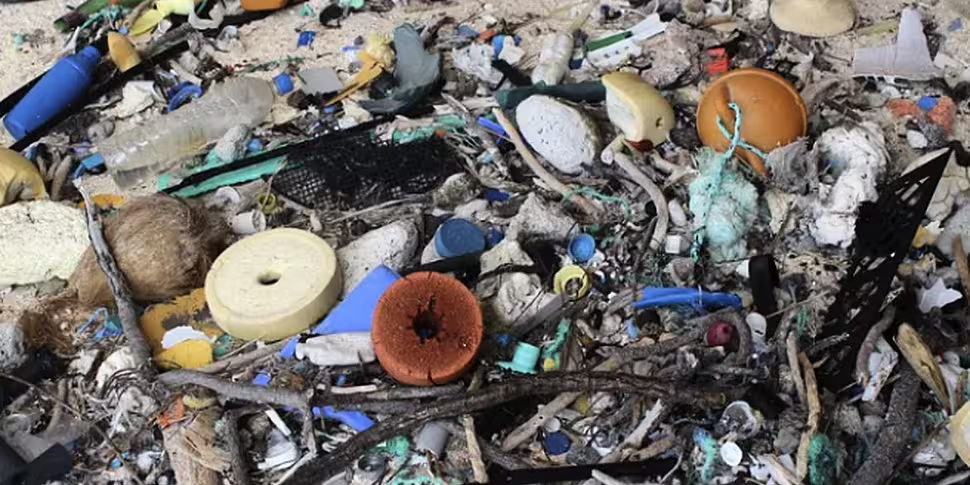Despite being one of the most remote places on earth and home to no men or women, a Pacific island has become a refuse dump for more than 37m pieces of plastic rubbish.
According to research published earlier this week, Henderson Island, the largest of the Pitcairn chain, has become arguably the biggest symbol of mankind’s plastic problem. Scraps of plastic shrapnel lie buried in the sand, while the high-tide line is clearly marked by rubbish on the beach.
The plastic is also affecting the local fauna, with turtles found tangled in fishing lines and hermit crabs spoiled for choice for the right receptacle to call home for a while.
Henderson Island is host to the highest density of plastic debris found anywhere in the world, according to a report published in the Proceedings of the National Academy of Sciences.

Examples of plastic trash on the island, including a purple hermit crab making its home in a plastic container [Proceedings of the National Academy of Sciences]
The uninhabited island is so remote that scientists usually visit it once or twice a decade, according to the University of Tasmania. But it’s located right in the heart of ocean currents that bring forth a constant flow of plastic rubbish from all over the world. Everything from litter carried by rain into storm drains to debris tossed off the side of sea vessels winds up there.
“What’s happened on Henderson Island shows there’s no escaping plastic pollution, even in the most distant part of our oceans,” said the study’s lead author Jennifer Lavers in a statement.
“Far from the pristine ‘deserted island’ that people might imagine of such a remote place, Henderson Island is a shocking but typical example of how plastic debris is affecting the environment on a global scale.”
The scientists point to the map, showing that the nearest major human settlement to Henderson Island is a massive 5,150km away. The 17 tonnes of plastic now washed up on its beaches have travelled great distances, with thousands more arriving every day.
But this discovery on one of the Pitcairn Islands, which are a UNESCO World Heritage Site, is merely the tip of the iceberg; according to the researchers, the amount of plastic rubbish on the island “account for only 1.98 seconds’ worth of the annual global production of plastic.”









